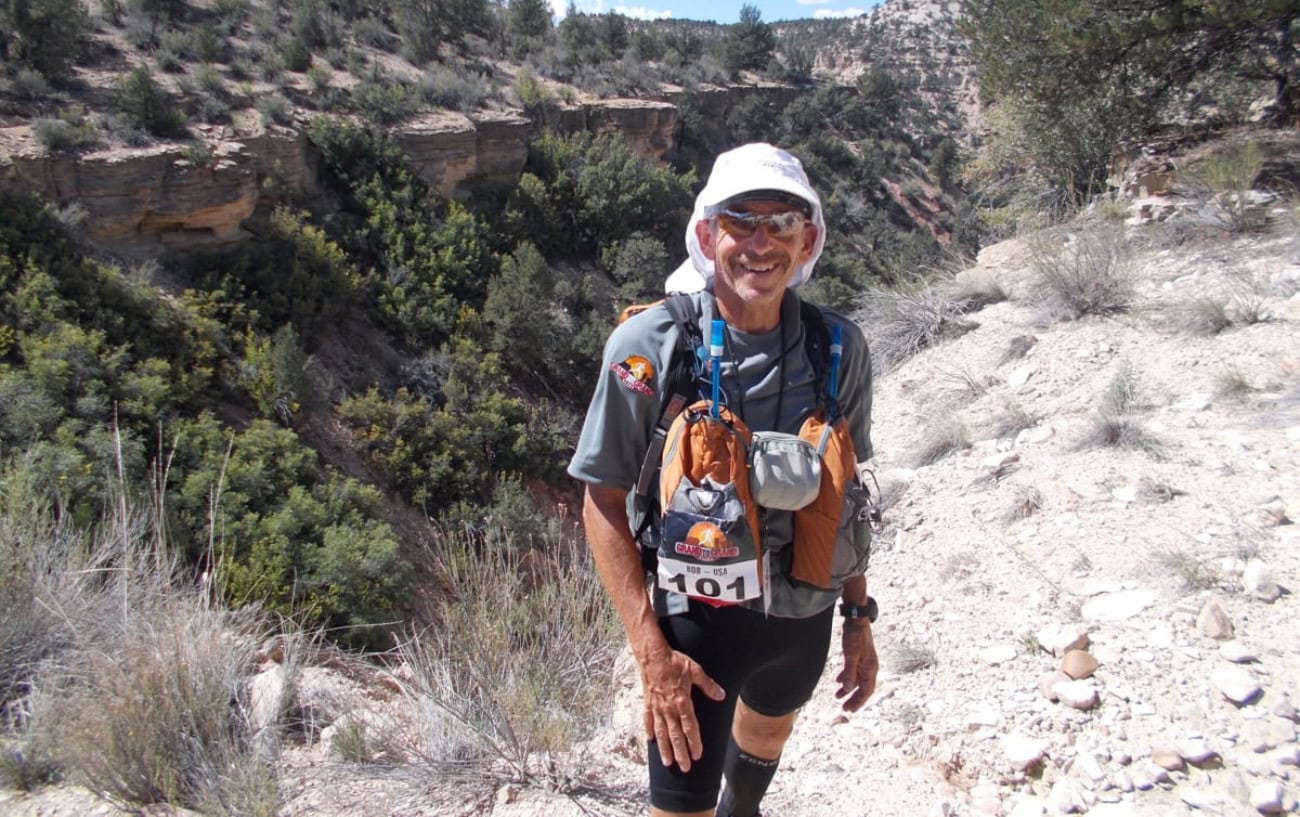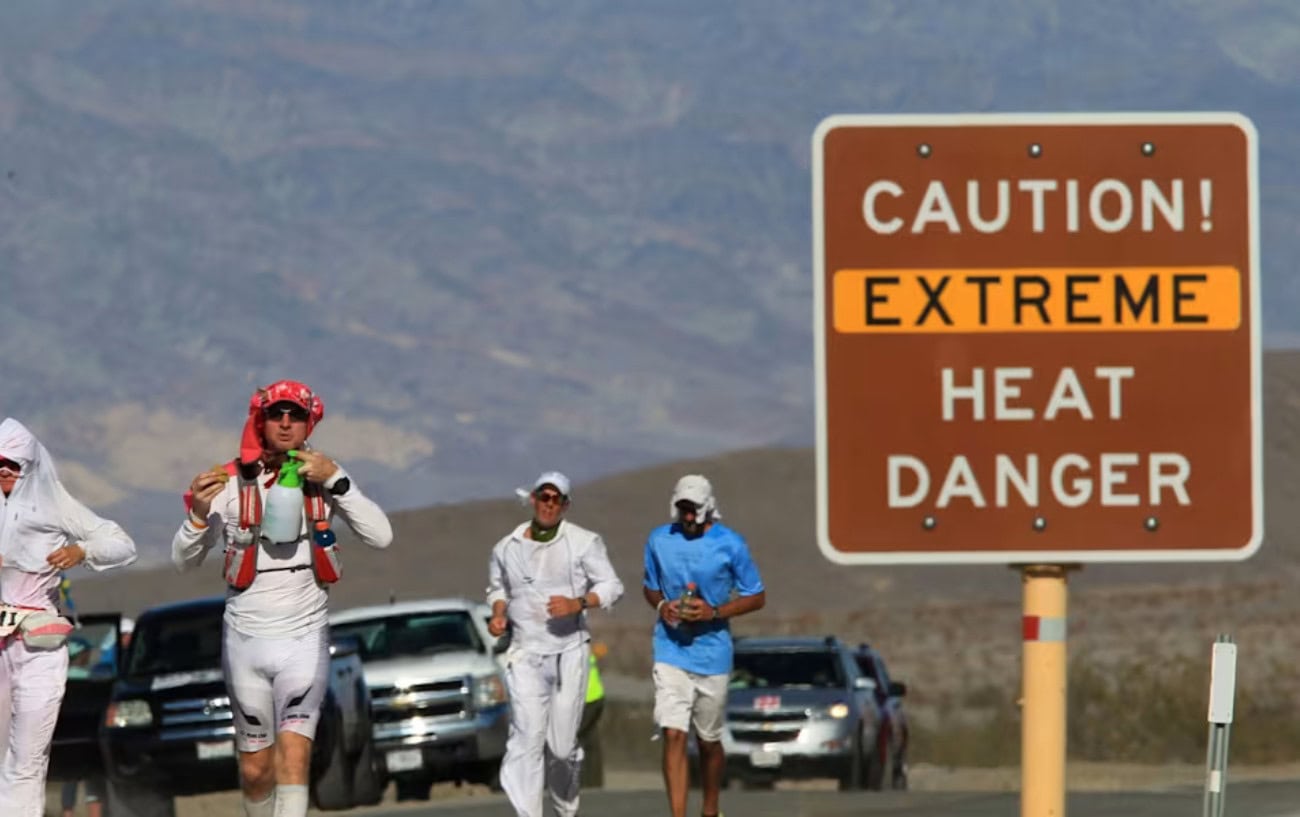Incorporating uphill running1Barnes, K. R., Hopkins, W. G., McGuigan, M. R., & Kilding, A. E. (2013). Effects of Different Uphill Interval-Training Programs on Running Economy and Performance. International Journal of Sports Physiology and Performance, 8(6), 639–647. https://doi.org/10.1123/ijspp.8.6.639 into your training program will improve your performance, speed, endurance, and running economy.
I know quite a few distance runners who try to avoid hill running, and for good reason: it’s hard!
I would be lying if I didn’t share that I always feel a bit anxious before my hill workouts. I don’t know if it’s the excitement of getting to the workout and pushing hard or if I just know how challenging it will be, and I’m preparing myself for what’s to come.
What I do know is that it will be worth it. Trust me.
Whether you’re a trail runner tackling steep, relentless climbs on every long run and race, or a marathoner preparing for challenging courses like Boston or Paris, hill training is essential.
It not only reduces the stress and unpredictability of race day but also allows you to refine your pacing and strategy in advance. Without proper preparation, those hills could catch you off guard and derail your race.
In this guide, I will explain the ins and outs of hill running, why it benefits running performance, and give you my top eight workouts to try out in your training plan.

What Are Hill Repeats?
Hill repeats are interval running workouts that alternate hard, uphill running, and easy recovery periods (usually running or walking back down the hill).
Building hill training workouts involves various components, including the incline of the hill, the intensity level of the hard intervals, the length of the intervals, and the number of repetitions to complete.
You can adjust any of these components to your current fitness level to make the sessions work for you.
What Are The Benefits Of Hill Running?
Hillwork can be intimidating at times, but it’s worth its weight in gold when you realize how it can benefit your fitness.
Hill running can:
- Make you a faster runner: Hill workouts are speedwork intervals with much less pounding. You are working toward the same goal as during your track workout, just uphill which can promote injury prevention.
- Turn you into an endurance monster: Hill running will work on improving your VO2 max, allowing you to run longer at a higher intensity.
- Improve your running form and cadence: When you run uphill, you must use short, quick, powerful strides and good upright posture with a powerful arm swing. These quick strides can also help improve your running cadence and stop you from overstriding.
- Build strength in your leg muscles: Running hills is like a speed session and leg strength training workout all in one. It recruits a high percentage of muscle fibers and builds strength and power in your glutes, quads, hip flexors, hamstrings, hip flexors, and calves.
- Boost mental grit: Running uphill is hard. These challenging sessions will make you a tougher, more resilient runner and able to mentally tackle a hilly course.
Practicing running hills is also a great way to prepare for your race strategy. My secret is that I always pull back on the uphill, and let lose on downhill, with control, of course.
I find that trying to keep a consistent effort level while going up and down works best. Done correctly, this will result in a slower “pace” when running uphill, and a quicker pace running downhill.
If you try and “push though” the uphills and maintain your race pace, you’ll find that you’ll be out of breath in no time with little chance of recovering unless you pull back your pace substantially.

What Is The Proper Technique For Running Uphill?
When performing any type of speed workout, the first thing that tends to go is our running form and technique. As we focus on trying to run hard, we allocate less energy to running correctly.
Here are some tips to keep in mind for your uphill running technique:
- Keep your back straight, chest proud, core tight, head and neck neutral, and shoulders back and relaxed.
- Lean slightly into the hill, keeping your body straight as a board. Don’t round your shoulders or hunch over.
- Use a strong arm swing to help propel you up the hill.
- Keep your stride length short and your cadence quick, and land lightly on the balls of your feet for a quick turnover.
How Do I Incorporate Hill Running Into My Training Plan?
As a running coach, one of my most important jobs is to ensure runners have a carefully thought-out training plan with every piece of the puzzle in the right place to allow for improvement and recovery.
Position your hill workouts with an easy run or recovery run on either side. This will allow your body to prepare for the hard sessions to come and recover afterward so you can continue to train as planned.
Here is a sample week set up, including a hill training cycle, so you can see how to arrange them within your schedule:
Monday: Easy Run
Tuesday: Hill Running Workout
Wednesday: Recovery Run
Thursday: Tempo Run (or another speed workout, depending on your running goal)
Friday: Recovery Run
Saturday: Long Run
Sunday: Rest

My Top Tips For Hill Running Workouts
I have compiled some of my best workouts for various objectives so you can choose which ones work for your current goals.
Before we begin, here are some tips to ensure you have a safe, effective workout:
#1: Choose A Hill
The hill you choose to perform your workouts on will depend on what you have available and your workout objective.
If you are running outside, choose a hill with a “runnable” incline. For some, that may be a 3-5% grade, and for others, it may be a steep hill with up to a 15% grade.
It will also depend on the workout. Shorter, more explosive hill sprints can be done on shorter, steeper hills, whereas long distance hill repeats may need to be done on hills with less of an incline.
You want the hill to be challenging but runnable.
Using a treadmill makes it easy because you get to set the gradient yourself!
#2: Warm Up
Warm up thoroughly before each hill running session with a 15-20-minute easy jog on flat ground, followed by dynamic stretches, such as hip openers, goblet squats, forward lunges, and leg swings.
#3: Forget About Pace
Focus on your effort level instead of pace. You won’t hit the same paces running on flats as you will on hills, so use the rate of perceived exertion chart to run hard without a specific race pace in mind.
You can also use heart rate training zones to gauge your effort level.
#4: Focus On Form
Keep your uphill running technique in check and run with good form.
#5: Be Consistent
As with any other speed workout, focus on consistent reps for your hill sessions. If you fall behind on the last few reps, it may be time to call it quits and cool down.
#6: Cool Down
Cool down at an easy pace for 5-10 minutes to restore your heart rate and breathing levels to baseline.

What Are The Best Hill Running Workouts?
#1: Short Hill Sprints
If you are looking for pure power and speed, hill sprints are the way to go.
- Sprint 10 seconds uphill at a 9+ RPE effort level.
- Walk back down to your starting point.
- If you need to, rest completely for 1-2 minutes at the starting point until you are ready to go again.
- Repeat 8-12 times, depending on your fitness level.
Beginners can start with 10 seconds, but as your fitness improves, increase the sprint time until you reach 30-second repeats.
#2: Progression Ladder
Repeat the following three times:
- Run uphill for 45 seconds at a 6 RPE effort level.
- Walk or jog back down to your starting point.
- Run uphill for 45 seconds at a 7 RPE effort level.
- Walk or jog back down to your starting point.
- Run uphill for 45 seconds at an 8 RPE effort level.
- Rest 1 minute
- Walk or jog back down to your starting point.
As your fitness improves, increase the run time to 60 seconds.
#3: Double Pump Hills
- Sprint 10 seconds uphill at an RPE effort of 9+.
- Rest 30 seconds in place.
- Continuing to climb, sprint 10 seconds uphill at an RPE effort of 9+.
- Jog slowly back down to your starting point.
- Repeat 8-12 times, depending on your fitness level.

#4: Long Hill Repeats
Repeat the following four times:
- Run uphill for three minutes at an RPE effort of 6.
- Jog back down to the starting point.
As your fitness improves, you can increase the run time to up to 6 minutes; just adjust the reps accordingly.
#5: Descending Endurance Ladder
- Run uphill for 6 minutes at an RPE effort of 6.
- Jog back down to the starting point.
- Run uphill for 4 minutes at an RPE effort of 6.
- Jog back down to the starting point.
- Run uphill for 2 minutes at an RPE effort of 6.
- Jog back down to the starting point.
- Run uphill for 1 minute at an RPE effort of 6.
- Jog back down to the starting point.
#6: Hill Running With Bounds
Ready for some real power?
We have added an extra explosive component, bounds, to this hill workout. Watch this video to learn how to perform bounds with the correct technique.
- Do uphill bounds for 10 seconds.
- Run 10 seconds uphill at an RPE effort of 9+.
- Walk back down to your starting point.
- Rest completely for 1-2 minutes.
- Repeat 4-8 times, depending on your fitness level.

#7: Power Hike Repaets
If you are a trail runner, you probably have figured out that you end up walking quite a bit when racing steep terrain. Perfecting the power hike is the best way to get ahead on those challenging courses.
This overlooked skill will give you an edge over your trail running competitors, who may be trying to run up an unrunnable hill!
This is also a helpful workout for ultramarathoners, as walking will most likely be a large part of your racing experience.
Perform the following 5-8 times throughout your next long run:
- When you reach a steep uphill, power hike for 1-3 minutes or until you reach the top of the hill.
- Be sure there are at least 10 minutes of recovery hiking or light jogging between each power hiking interval.
#8: Downhill Strides
Hard, downhill running intervals aren’t something I recommend doing throughout the week or consistently in your training because it can really bang you up and may provoke an injury.
However, you can effectively work running downhill into your long runs here and there, especially if you are training for a hilly race with a lot of decline.
Perform the following 5-8 times throughout your next long run:
- When you reach a downhill, speed up to a hard effort of a 6-7 RPE for 1-3 minutes. Focus on your running technique and form, and tread as lightly as possible on the terrain.
- Ensure at least 10 minutes of recovery jogging between each downhill interval.
There you have it! My best hill running workouts to make you a faster, stronger, and more efficient runner.
If you want to perfect your downhill technique, check out my YouTube video:













